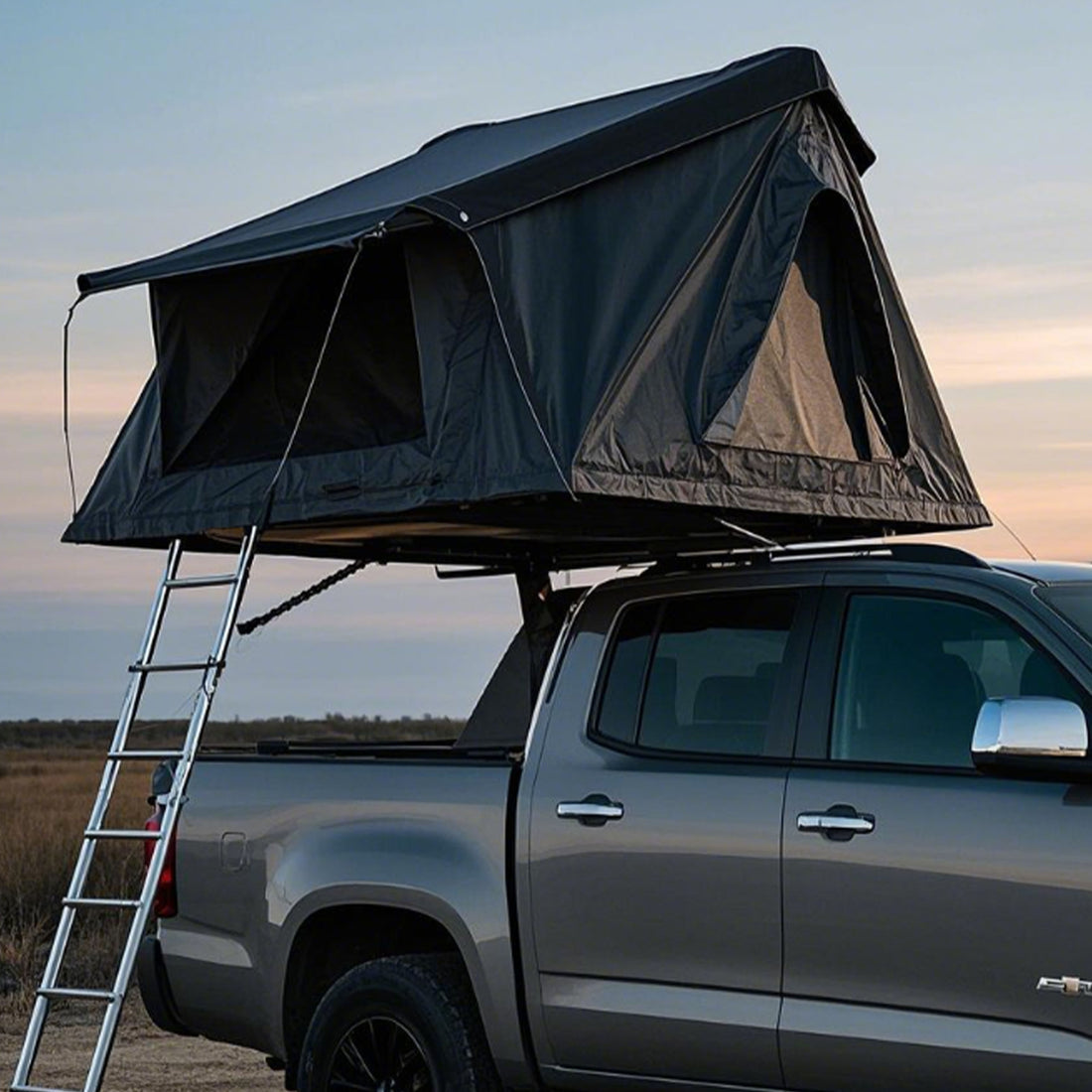Camping is an adventurous and challenging activity, especially when you choose to camp in windy weather or extreme environments. Wind can become the biggest obstacle to your camping experience, affecting the stability, comfort, and safety of your tent. Therefore, choosing a wind-resistant tent is crucial to provide you with a stable, comfortable, and safe shelter.
In this blog post, we will explore how to choose a tent with excellent wind resistance and share some key tips to help you deal with wind challenges during camping. We will also use the Bamatent 2024 model hard shell tent as an example to show how choosing the right tent design, materials, and features can enhance wind resistance.
1. Understanding the Basic Requirements for Wind-Resistant Tents
A wind-resistant tent is not just a tent that can "withstand wind"—it needs to have a series of unique designs and features to cope with extreme weather conditions. To help you understand how to choose the right tent, here are some basic requirements for a wind-resistant tent:
- Sturdy Frame System: The frame system is the core of a tent’s wind resistance. A stable frame system effectively distributes wind pressure, reduces shaking and tilting of the tent, and ensures that the tent remains stable in strong winds.
- High-Density, Durable Fabrics: The strength and thickness of the tent fabric directly affect its wind resistance. A thicker, denser fabric can reduce direct wind impact on the tent, preventing it from being blown over or damaged.
- Optimized Shape Design: Streamlined designs help reduce wind resistance, preventing direct wind impact on the tent’s surface and ensuring the tent stays stable. Reducing surface area and wind drag is an effective way to increase wind resistance.
- Proper Ventilation System: While tents need to resist external winds, internal airflow is equally important. A well-designed ventilation system can help balance the pressure difference between the inside and outside of the tent, preventing instability.
2. Choose a Tent with a Strong Frame System
When choosing a wind-resistant tent, the frame system is undoubtedly one of the most important factors to consider. The frame system directly determines the stability of the tent in the wind. In this regard, Bamatent's 2024 hard shell tent uses aviation-grade aluminum and stainless steel air pressure rods to provide excellent wind resistance.
Advantages of the Frame System:
- Aviation-Grade Aluminum Hard Shell: The shell of the Bamatent 2024 model is made from aviation-grade aluminum, providing exceptional structural stability to keep the tent safe in strong winds. Aluminum is lightweight yet sturdy, making the tent both wind-resistant and durable.
- Stainless Steel Air Pressure Rods: The tent features stainless steel air pressure rods that allow for quick setup in just 30 seconds. The durable stainless steel construction ensures long-lasting performance and makes your camping experience quick and hassle-free.
Tips:
- Choose a Multi-Point Support System: Multi-point support systems are more stable than single-point ones, helping to distribute wind pressure and keep the tent secure in high winds.
- Look for Quick-Setup Designs: In high winds, tents with quick setup features reduce the time spent outdoors during inclement weather.
Source:
According to OutdoorGearLab, the frame system is one of the most important factors influencing a tent's wind resistance. A strong frame can effectively distribute wind pressure, reducing the risk of the tent being blown over.
3. Choose High-Quality Tent Fabrics
Tent fabric is not only for waterproofing and sun protection, but its thickness and density directly affect the tent’s wind resistance. The Bamatent 2024 hard shell tent uses high-quality 310G polyester fabric combined with vinyl sunscreen technology to provide excellent wind resistance.
Fabric Advantages:
- 310G Thick Polyester Fabric: Compared to traditional Oxford fabric, 310G polyester is more durable and wind-resistant. Its thick texture helps reduce wind pressure on the tent’s surface and provides better protection.
- UPF 50+ Sun Protection: In addition to resisting wind, the 310G polyester fabric also provides excellent UV protection, safeguarding campers from harmful sunlight.
Tips:
- Choose Fabrics with UV Protection and Waterproofing: UV-resistant fabrics can effectively block sunlight, while waterproof fabrics ensure the tent stays dry during rain.
- Pay Attention to Fabric Breathability: In windy environments, the breathability of the fabric is equally important. High-quality polyester fabrics often feature good ventilation, ensuring airflow inside the tent and preventing excessive moisture and pressure buildup.
Source:
According to TheClymb.com, fabric density and sun protection technology directly affect a tent’s wind resistance. High-quality fabrics not only resist wind but also provide extra comfort and durability.
4. Choose an Optimized Shape Design
The shape of the tent directly impacts its wind resistance. Streamlined designs help reduce wind resistance, ensuring the tent stays stable in strong winds. The Bamatent 2024 hard shell tent uses a streamlined design that not only enhances wind resistance but also reduces drag during high-speed driving.
Design Advantages:
- Streamlined Design: The Bamatent tent’s streamlined design reduces wind impact, ensuring that wind does not directly hit the tent’s surface. This design helps minimize wind pressure and improves stability.
- Reduced Wind Drag: The streamlined shape also helps reduce air resistance while driving, lowering fuel consumption.
Tips:
- Choose Low and Compact Designs: The lower the tent, the stronger its wind resistance. A compact design reduces wind drag, ensuring the tent remains stable in high winds.
- Avoid Complex Designs: Complex designs may increase wind pressure on the tent, so simple, streamlined designs tend to perform better in extreme weather conditions.
Source:
According to REI.com, the shape and aerodynamics of a tent directly affect its wind resistance, especially in high wind conditions.
5. Strengthen the Tent's Ground Stability
Even if the tent itself is wind-resistant, its stability on the ground is key to ensuring the tent remains secure. Bamatent’s 2024 hard shell tent comes with a robust roof rack and a professional ground peg system, which enhances the tent’s stability on the ground.
Ground Stability Advantages:
- High-Strength Pegs and Ropes: The tent is equipped with high-strength YKK zippers and durable ground pegs, ensuring the tent stays firmly anchored to the ground, even in extreme weather.
- Roof Rack Support: The additional roof rack provides extra support for the tent, preventing it from swaying or tilting in the wind.
Tips:
- Use Professional Peg and Rope Systems: Ensure the tent is securely anchored to the ground and use appropriate peg and rope systems to secure it in high winds.
- Look for Adjustable Fixing Systems: Adjustable systems allow you to modify the anchor points based on wind speed and weather conditions, ensuring the tent remains stable.
Source:
Research from Wind-Sport.com indicates that the secure attachment of the tent to the ground is one of the most important factors for its wind resistance.
6. Efficient Ventilation System Ensures Tent Stability
In windy weather, proper ventilation inside the tent is equally important. A good ventilation system can help balance the pressure difference between the inside and outside of the tent, preventing instability. The Bamatent 2024 hard shell tent comes with multiple ventilation openings and eye-protecting LED lights to ensure comfort even in strong winds.
Ventilation System Advantages:
- Adjustable Vents: The tent features multiple vents that can be adjusted to control airflow, ensuring the interior is well-ventilated and preventing pressure imbalance.
- Built-In Condensation Pad: The included condensation pad provides extra comfort and ensures the tent remains dry and comfortable.
Tips:
- Choose Tents with Adjustable Ventilation Systems: In strong winds, internal airflow is crucial. Adjusting the size of ventilation openings helps balance internal and external air pressure, preventing instability.
- Use a Condensation Pad: Condensation pads provide extra comfort, ensuring the tent stays dry in any environment.
Conclusion
When choosing a wind-resistant tent, considering factors such as the frame system, fabric quality, shape design, ground stability, and ventilation system will help you find the right tent for your needs. The Bamatent 2024 hard shell tent, with its sturdy frame, durable fabric, streamlined design, robust ground stability, and efficient ventilation system, is an ideal choice for camping in strong winds.
Whether you’re planning a short camping trip or a long-term adventure, a high-quality wind-resistant tent is the key to ensuring your camping experience is safe and comfortable. If you’re looking for a tent that performs well in extreme weather, the Bamatent 2024 hard shell tent is your best choice.
We hope this blog has provided you with useful tips to make an informed decision, allowing you to enjoy a safe and comfortable camping experience!

